Nanotechnology promises employment, sustainability and health. The Dutch government invests heavily in it. But how do we achieve these promises? In preparation for a parliamentary debate about nanotechnology on 21 April 2010, the Rathenau Institute initiated a working visit of MPs to one of the most promising areas of its application: healthcare.
Jun 4th, 2010
Read more
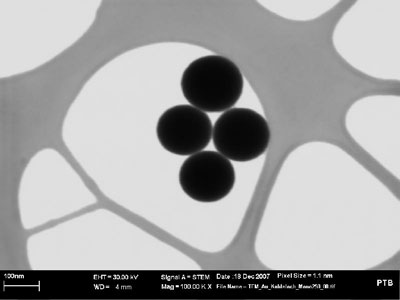 PTB-Wissenschaftler entwickeln genaues und rueckfuehrbares Messverfahren fuer Nanopartikel.
PTB-Wissenschaftler entwickeln genaues und rueckfuehrbares Messverfahren fuer Nanopartikel.
Jun 4th, 2010
Read more
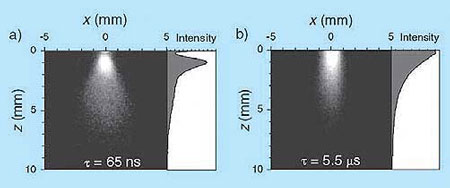 The ultrashort laser ablation of solid materials is basis of different modern and advanced scientific and technological areas as fabrication of metal and semiconductor nanoparticles, deposition of nanostructures and their embedding in optical films, or deposition on their surfaces in order to alter exciting properties or development of new.
The ultrashort laser ablation of solid materials is basis of different modern and advanced scientific and technological areas as fabrication of metal and semiconductor nanoparticles, deposition of nanostructures and their embedding in optical films, or deposition on their surfaces in order to alter exciting properties or development of new.
Jun 4th, 2010
Read more
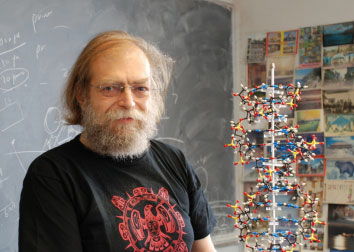 New York University Chemist Nadrian Seeman has been awarded the 2010 Kavli Prize in Nanoscience for his creation of robotic devices that have the potential to create new materials a billionth of a meter in size.
New York University Chemist Nadrian Seeman has been awarded the 2010 Kavli Prize in Nanoscience for his creation of robotic devices that have the potential to create new materials a billionth of a meter in size.
Jun 4th, 2010
Read more
Chinese researchers have successfully built an electromagnetic absorbing device for microwave frequencies. The device, made of a thin cylinder comprising 60 concentric rings of metamaterials, is capable of absorbing microwave radiation, and has been compared to an astrophysical black hole.
Jun 4th, 2010
Read more
Eight scientists whose discoveries have dramatically expanded human understanding in the fields of astrophysics, nanoscience and neuroscience has been recognised with the award of the million-dollar Kavli Prizes.
Jun 3rd, 2010
Read more
For most people, frustration is a condition to be avoided. But for scientists studying certain 'frustrated' ensembles of interacting components - that is, those which cannot settle into a state that minimizes each interaction - it may be the key to understanding a host of puzzling phenomena that affect systems from neural networks and social structures to protein folding and magnetism.
Jun 3rd, 2010
Read more
Die fuehrende Konferenz zum Thema Nanotechnologie in Europa findet bereits seit 2002 in Dresden statt und wird in ihrer achten Auflage am 6. und 7. Juli 2010 zur Nanotechnologie-Leitveranstaltung des DRESDEN-concept ausgebaut.
Jun 3rd, 2010
Read more
Researchers are investigating new applications for terahertz sensors. Based on their findings, these sensors could be used for improving optical sources, detectors and modulators for optical interconnections and for creating biomolecules, such as plastic explosives.
Jun 2nd, 2010
Read more
Scientists have captured the first images of electrons that appear to take on extraordinary mass under certain extreme conditions, thus solving a 25-year mystery about how electrons behave in metals.
Jun 2nd, 2010
Read more
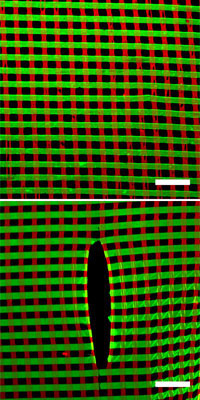 Discovery has potential applications in tissue regeneration and high-performance textiles.
Discovery has potential applications in tissue regeneration and high-performance textiles.
Jun 2nd, 2010
Read more
The purpose of this subcontract is to identify and evaluate the clinical potential of candidate targeted nanotherapeutics which has shown promise in small animal models for subsequent efficacy and toxicity testing in large animal models. It is expected that data gathered under this subcontract will enable filing of Investigational New Drug (IND) applications with the US-FDA.
Jun 2nd, 2010
Read more
Ultrasensitive test gives first accurate answer after prostate cancer surgery.
Jun 2nd, 2010
Read more
The International Food Information Council (IFIC) 2010 'Consumer Perceptions of Food Technology' survey found that consumers support the use of food biotechnology when they consider its potential benefits for reducing the impact of food and food production on the environment, and for improving sustainability.
Jun 2nd, 2010
Read more
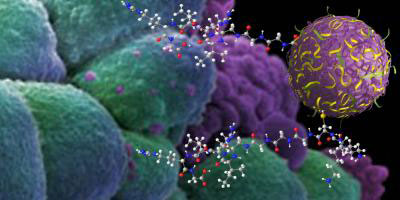 When loaded with an anticancer drug, a delivery system based on a novel material called nanosponge is three to five times more effective at reducing tumor growth than direct injection.
When loaded with an anticancer drug, a delivery system based on a novel material called nanosponge is three to five times more effective at reducing tumor growth than direct injection.
Jun 2nd, 2010
Read more
The College of Nanoscale Science and Engineering of the University at Albany announced today that 22 exceptional undergraduate students have been selected to participate in its prestigious Summer Internship Program.
Jun 2nd, 2010
Read more






 Subscribe to our Nanotechnology News feed
Subscribe to our Nanotechnology News feed